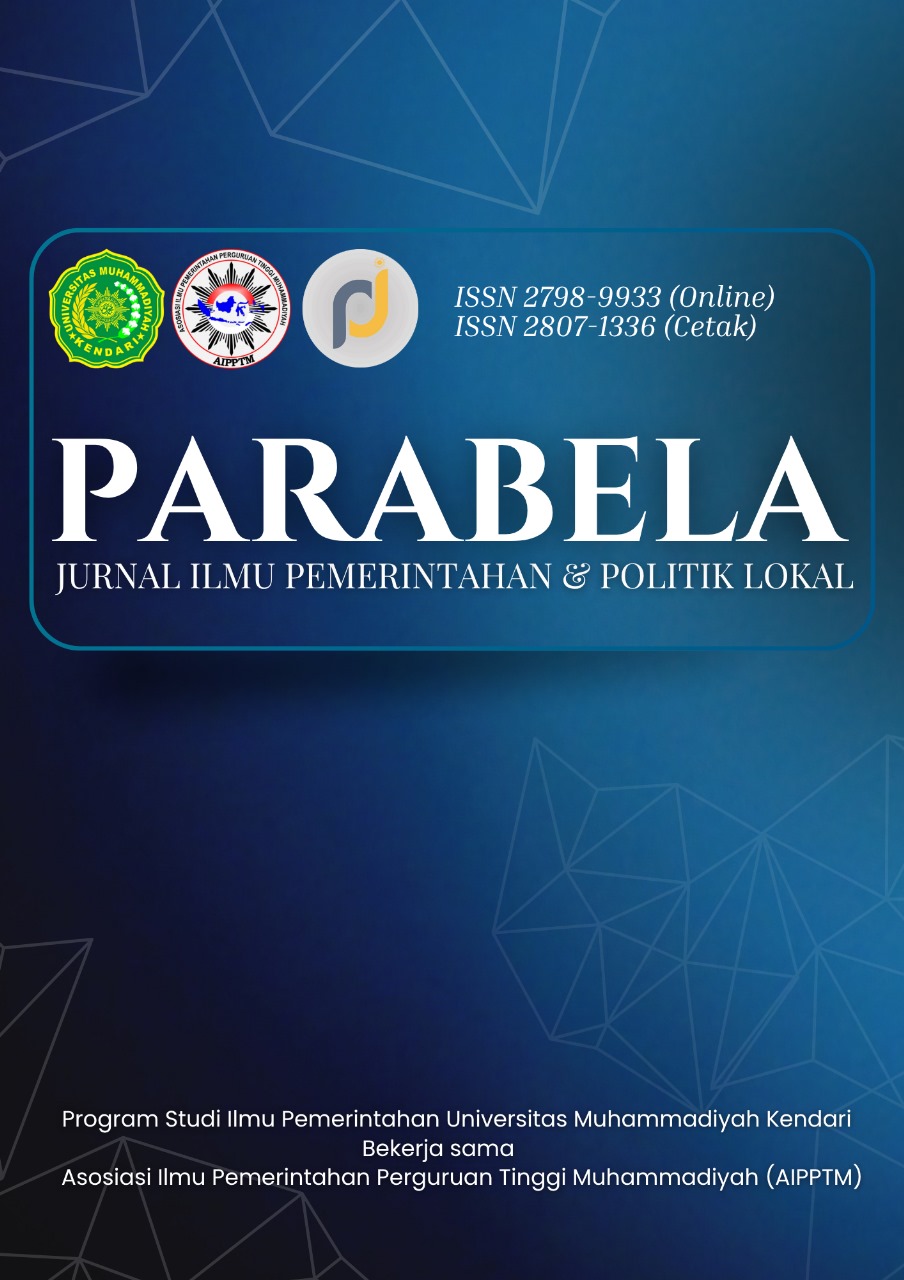Peran Komunitas Lokal dalam Tanggap Darurat Bencana di Kabupaten Indramayu
Main Article Content
Abstract
This study examines the role of local communities in the disaster emergency response phase in Indramayu Regency. The purpose of this study was to analyze the role of local communities in disaster emergency response, identify inhibiting factors, and identify supporting factors that can strengthen the community's role in disaster management. The method used was qualitative, with data collection techniques through interviews and documentation. The results showed that local communities actively contributed in victim evacuation, rescue, logistics distribution, basic health services, and psychosocial support. However, obstacles included limited equipment, minimal technical training, lack of human resources, and weak coordination with BPBD. Despite these challenges, trust from society, government support, strong social networks, and norms of reciprocity sustained the community’s role. Overall, local communities proved to be crucial actors complementing BPBD’s limitations. Strengthening capacity, cross-agency coordination, and logistical support is essential for effective and sustainable disaster response.
Article Details
Section

This work is licensed under a Creative Commons Attribution-ShareAlike 4.0 International License.
References
Gempa, D., & Kab, B. (2023). Pengaruh Kinerja Personel Tim SAR TNI-AU pada masa Tanggap. Jurnal …, 7(1), 583–595. http://journal.upy.ac.id/index.php/pkn/article/view/4847%0Ahttp://journal.upy.ac.id/index.php/pkn/article/download/4847/2975
Harahap, P. H., Khairani, Y. D., Nailah, I., & Br, A. (2025). KESIAPSIAGAAN BENCANA: LANGKAH PENTING UNTUK MENGURANGI RISIKO Putri. Medic Nutricia Jurnal Ilmu Kesehatan, 11(4). https://doi.org/10.5455/mnj.v1i2.644
Hariadi, U., Suratman, S., Gunawan, T., & Armawi, A. (2020). Kearifan Lokal Komunitas Sebagai Modal Sosial alam Manajemen Bencana Alam. Majalah Geografi Indonesia, 33(2). https://doi.org/10.22146/mgi.48548
Intani Syahputri, S., & Husein, R. (2023). Effectiveness of Regional Disaster Management Agency Semarang City Based on Early Warning System. Parabela: Jurnal Ilmu Pemerintahan & Politik Lokal, 3(2), 81–90. https://doi.org/10.51454/parabela.v3i2.673
Kusyairi, A., & Addiarto, W. (2023). Mitigasi Bencana Melalui Pengurangan Risiko Bencana Terhadap Kemampuan Tanggap Darurat Bencana Banjir Disaster Mitigation Through Disaster Risk Reduction Strategy (Drr) Against Disaster Response. Jurnal Penelitian Keperawatan , 9(1), 81–86.
Natsir, L. F. (2021). Penyusunan Kebijakan Perencanaan Pembangunan Kota Depok Tahun 2019. FISIP Universitas Wiralodra, 2(33), 19–32.
Nurcahyo, M., Setyawan, A., & Ansori, T. (2022). Manajemen Pengurangan Resiko Bencana Berbasis Komunitas. Journal of Community Development and Disaster Management, 4(2), 91–104. https://doi.org/10.37680/jcd.v4i2.2071
Ruchban, A. L., Saparudin Darwis, R., & Wibowo, H. (2024). Elemen Kebijakan Pemerintah Dalam Penanggulangan Bencana Di Indonesia. Kebijakan : Jurnal Ilmu Administrasi, 15(1), 79–88. https://doi.org/10.23969/kebijakan.v15i1.9276
Sahir, S. H. (2021). Metodologi penelitian. Penerbit KBM Indonesia.
SHANGGARA, F. S. (2021). PERANAN DINAS PERHUBUNGAN LAUT KAB. JEPARA DALAM OPTIMALISASI KINERJA SISTEM TRANSPORTASI LAUT DI PENYEBRANGAN KARIMUN JAWA. KARYA TULIS.
Sinambela, M., Hasibuan, A., Makbul, R., Armus, R., Marlyono, S. G., Simarmata, M. M., Kuswanto, Fatmayanti, A., Manalu, V., Bachtiar, E., Yasa, I. W., Purba, L. I., Chaerul, M., Kato, I., Hidayatulloh, A. N., & Nur Khaerat Nur. MITIGASI DAN MANAJEMEN BENCANA.
Sudarmono, S. (2021). Pembangunan Modal Sosial. Penerbit Rtujuh Media Printing.
Sugiyono, D. (2013). Metode penelitian pendidikan pendekatan kuantitatif, kualitatif dan R&D.
Tanjung, et al. (2020). Manajemen Mitigasi Bencana. Journal of Chemical Information and Modeling, 53(9), 1689–1699.
Zullam, W. F., Syarifuddin, S., & Komalasari, M. A. (2020). Modal sosial sebagai strategi pemulihan pasca gempa di desa gondang kecamatan gangga kabupaten lombok utara. RESIPROKAL: Jurnal Riset Sosiologi Progresif Aktual, 2(1), 108–122.

